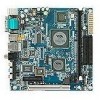Via EPIA-CN10000EG User Manual - Page 52
ACPI Function, ACPI Suspend Type
 |
View all Via EPIA-CN10000EG manuals
Add to My Manuals
Save this manual to your list of manuals |
Page 52 highlights
Chapter 3 POWER MANAGEMENT SETUP Phoenix - AwardBIOS CMOS Setup Utility Power Management Setup ACPI function ACPI Suspend Type HDD Power Down Power Management Timer Video Off Option Power Off by PWRBTN Run VGABIOS if S3 Resume AC Loss Auto Restart Peripherals Activities IRQs Activities [Enabled] [S1(POS)] [Disabled] [Disabled] [Suspend -> Off] [Instant-Off] [Auto] [Off] [Press Enter] [Press Enter] Item Help Menu Level ACPI is required in Windows 98SE, ME, 2000 & XP for better power management integrity : Move Enter: Select F5: Previous Values +/-/PU/PD: Value F10: Save F6: Fail-Safe Defaults ESC: Exit F1: General F7: Optimized Defaults Help ACPI Function Enables the ACPI (Advanced Configuration and Power Management Interface) functionality. Settings: [Enabled, Disabled] NOTE: ACPI is a power management specification that makes hardware status information available to the operating system. ACPI enables a PC to turn its peripherals on and off for improved power management. It also allows the PC to be turned on and off by external devices, so that mouse or keyboard activity wakes up the computer. ACPI Suspend Type Setting S1(POS) S3(STR) S1 & S3 Description S1/Power On Suspend (POS) is a low power state. In this state, no system context (CPU or chipset) is lost and hardware maintains all system contexts. S3/Suspend To RAM (STR) is a power-down state. In this state, power is supplied only to essential components such as main memory and wakeup-capable devices. The system context is saved to main memory, and context is restored from the memory when a "wakeup" event occurs. Depends on the OS to select S1 or S3. 44















